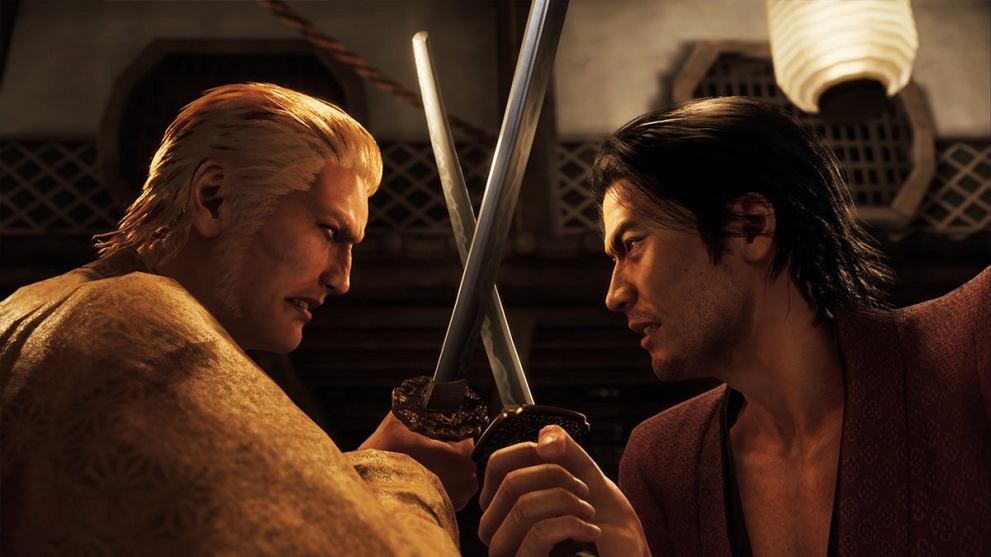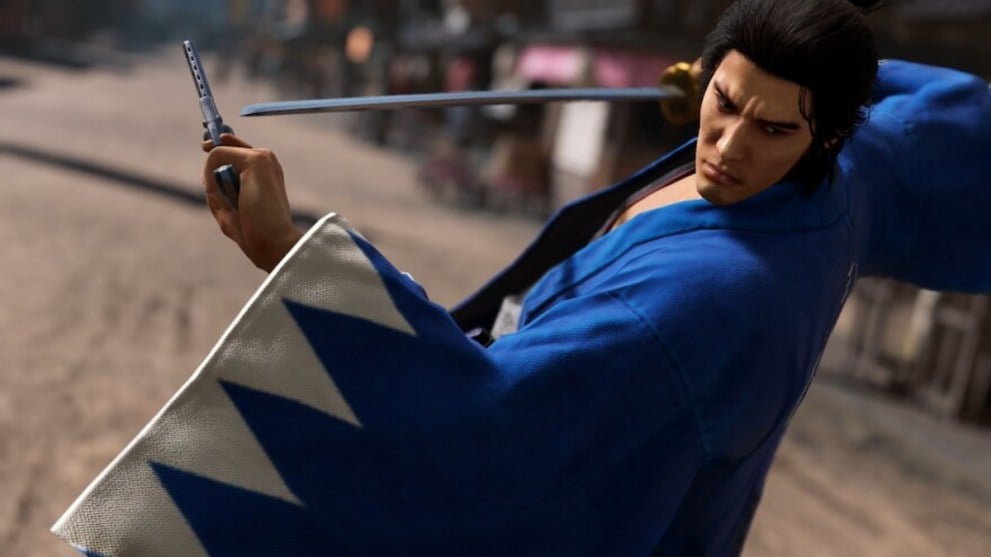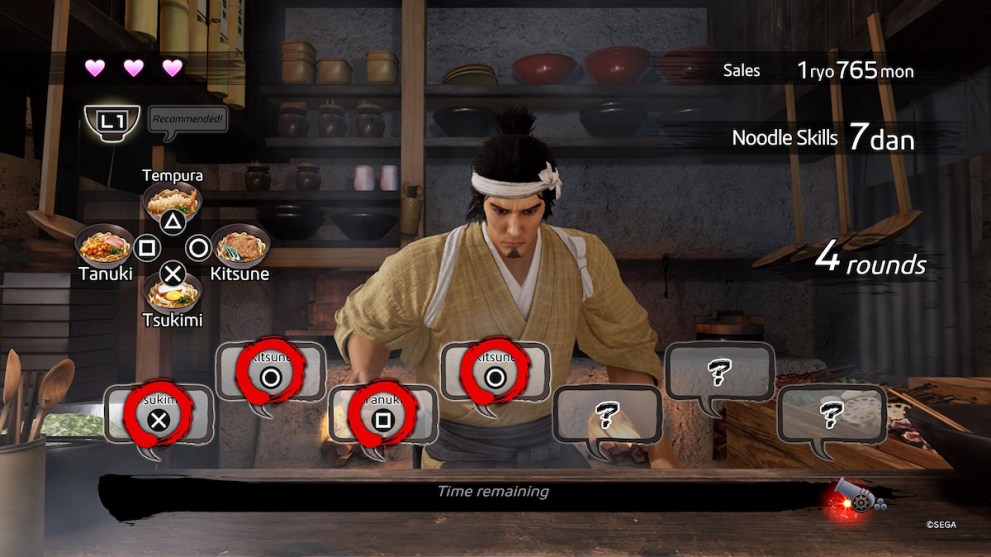For the longest time, Like A Dragon: Ishin has been the missing link in Ryu Ga Gotoku Studio’s long-running high-octane beat ’em up series. The game was originally released in Japan nearly a decade ago and never fully reached Western audiences until now. Like A Dragon’s fanbase in the West has grown dramatically in recent years, but ten years ago, the series was a very different beast and considered to be as niche as they come.
While the series now enjoys simultaneous worldwide releases, fans of the series used to have to endure an agonizing wait before the games reached the West. Yakuza 5 which was released in 2012 in Japan wasn’t available to play until three years later for Western audiences. In some ways, it was a dark time for the franchise. There simply wasn’t the demand for English localisations and the low sales for the series spoke for themselves. The risk of a Samurai spin-off drenched in Japanese lore and mythology far exceeded the reward.
The current landscape couldn’t be more different. Like A Dragon is considered to be the most popular its ever been thanks to the astronomical success of the prequel title Yakuza 0 which brought in legions of new fans. Since then the series has been appraised, for its story, characters, combat, and its dedication to embracing its Japanese heritage. The series has been going from strength to strength and coupled with the success of Sucker Punch’s samurai adventure Ghost of Tsushima, the time was right for Like A Dragon: Ishin to reach a new audience.
A Perfect Portrayal of Japan’s History and Culture

The city of Kamurocho is considered to be synonymous with the Like A Dragon series and, up till now, had featured in some capacity in every installment of the series. Like A Dragon: Ishin switches things up considerably by taking players hundreds of years into the past to explore Japan’s former capital city of Kyo.
While revisiting Kamurocho can feel like coming home, admittedly, it can get a bit stagnant. The portrayal of bustling city life and the neon lights has been replaced with a perfect snapshot of Japan’s history. Kyo achieves a level of authenticity that could only be achieved by Ryu Ga Gotoku Studio. Rather than nightclubs, hostess bars, and arcades, the streets are occupied by fish markets, peddlers, and merchants blazing through the streets of Kyo with carts of goods for the populace.
For a game that is technically nearly a decade old, the scale of foot traffic, vast number of NPCs, and the very impressive visual glow-up amount to Kyo being one of the most lively locations in the series so far. If Ghost of Tsushima allowed us to live out our fantasies of being a samurai warrior, then Like A Dragon: Ishin is a perfect representation of the culture surrounding it.
In an interview with the Guardian, series producer Hiroyuki Sakamoto emphasized the importance of nailing the atmosphere of the locations in the series saying:
The thing that we focus on the most is the atmosphere of the place. We want players to feel like they’ve been there, even if they never have … we play with lighting, we play with texture, we play with the foot-traffic on the streets … we think not just about accuracy, when you compare our locations to real life, but also how it would feel to play it. We take a lot of effort to balance the real and the unreal, to make it as enjoyable as possible
Hiroyuki Sakamoto via the Guardian
A Grander Story and Scale

The Bukumatsu Era was a time of political turmoil for the country and marked the end of the Edo period ruled by the Tokugawa Shogunate. The real-life events are translated into the game as Ryoma finds himself caught between two political factions waging for supremacy to determine their future at a time when hostilities towards foreigners were at an all-time high.
The stories of the Like A Dragon series typically feature an element of political intrigue at their core whether it be the constant battle between the Tojo Clan and Omi Alliance or corrupt government officials manipulating events from behind the scenes. Rarely has the series dealt with history-defining stakes though. While the levity from the substories of the series is ever present, the story of Like A Dragon: Ishin is mostly played straight and carries itself with the grace of an epic period drama.
The real-life historical figures that take center stage in the game’s plot are portrayed by series mainstays like Kazuma Kiryu who takes the role of the game’s protagonist Ryoma Sakamoto. Beloved characters like Goro Majima and Taiga Saijima also feature prominent roles as their historical counterparts. As Like A Dragon: Ishin isn’t considered canon, it allows fans to encounter previous rivals and adversaries from the main series.
Fan favorite villain Ryuji Goda returns to the series as the ruthless commander Saigo Kichinosuke, along with Kiryu’s biggest Yakuza 0 enemy, Daisaka Kuze. Like A Dragon: Ishin appeals to newer fans of the series with plenty of easter eggs and surprises to be found along the way. Some of the old actors in the original game have even been replaced with new cast members from Yakuza: Like A Dragon such as Adachi, Joon Gi-Han, and Ryo Aoki.
It’s fair to say that most of the cast retains the personality and characteristics of their mainstream counterparts, but seeing them interact in this new period and setting, with some reworked dynamics, is a true joy for long-time fans of the series.
A Flashy and Stylish Combat System

Kazuma Kiryu might be a big softy at heart, but he’s no stranger to throwing hands and delivering a beatdown when necessary. Ryoma shares the same philosophy as his counterpart and has four unique combat styles which can decimate any enemy in the game.
Like A Dragon: Ishin was actually the first game in the series to introduce combat styles, and as the game is set in 19th-century Japan, most of these focus on Sakamoto’s mastery of his sword and revolver. You can of course opt to engage enemies in a fistfight, but given that most enemies in the game are heavily armed it’s not the wisest approach to take.
Fans of Yakuza 0 will be familiar with the four combat styles which can be upgraded with both talent orbs and honing your skills in the various dojos in Kyo. The flashiest of the four styles is by far Wild Dancer which allows Ryoma to dual wield his katana and revolver while being extremely agile and light on his feet. Stylish heat actions once again return to the series along with a new addition of special attacks which are unique to each style and can be charged up with the heat gauge.
The most unique combat mechanic of Like A Dragon: Ishin is the Trooper Card ability. As captain of the Shinsengumi, Ryoma can access the unique abilities of his soldiers in battle which can provide stat boosts, health, and major damage to enemies. The ranks of the troopers are made up of famous faces like AEW wrestler Kenny Omega and actor Rahul Kohli.
A Host of New Mini-Games

Mini-Games are integral to Like A Dragon. While there are some returning fan favorites like Karaoke, Like A Dragon: Ishin introduces a set of mini-games that are unique to the title and further embrace the time period and culture.
There’s a whole range of mini-games that will keep players entertained for hours on end and adds to the density and variety of Kyo as a whole. Whether you want to go for a drunken night on the town and indulge in some Buyo Dancing or if you want to just kick back with some fishing there’s plenty to keep you occupied.
Each region of Kyo also features a range of substories that form the heart and soul of the game. Not only do these substories add new depth to the protagonist of the series, but they also put the spotlight on the residents of Kyo, once again cementing Ryu Ga Gotoku’s reputation for breathing life into their cities.
This can take the form of helping a struggling author overcome his writer’s block, hunting down supposed deities, or getting swept up in the dance craze taking Kyo by storm. There really is care and attention that the residents receive. Even vendors and shop owners have their own friendship gauge that Ryoma can build up over time by continually visiting their stores which can unlock new encounters, discounts, and substories.
Like A Dragon: Ishin was previously regarded as one of the most elusive titles in the series. Now that it’s widely available it proves if anything that Ryu Ga Gotoku Studio can step outside its comfort zone to bring its unprecedented talent for virtual tourism and density to an entirely new setting and period. After 10 years of obscurity, Like A Dragon: Ishin looks set to cement its reputation as one of the best installments in the series.
